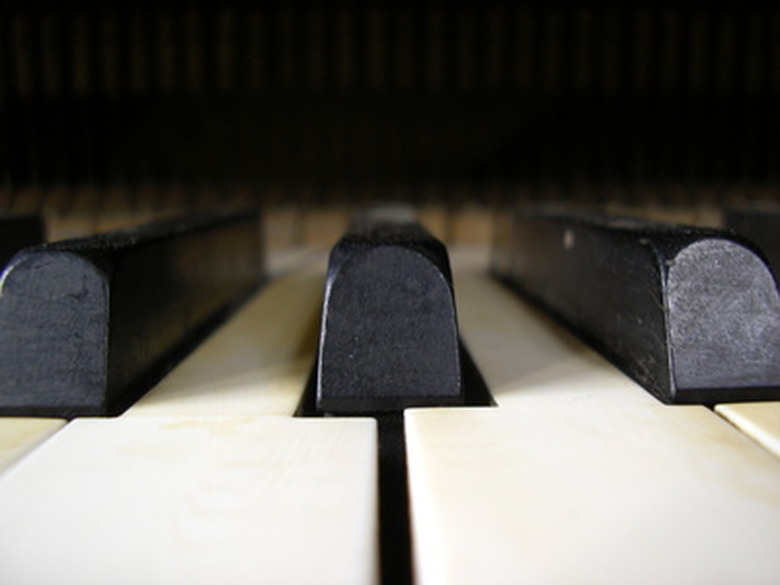Ebony Tree Facts
Americans likely do not know about the look or origins of the tree called ebony (Diosyros ebenum), but may know it yields an amazingly dark blackish-brown wood used to make chess pieces, inlays for luxury furniture or the half-step keys on a piano. This wood is dense and hard and has almost metallic qualities. This tropical tree is appropriate to grow in frost-free regions, such as those designated U.S. Department of Agriculture hardiness zones 10 and warmer.
Origins
The ebony tree is native to the humid, hot, coastal lowland forests of India and Sri Lanka. Because of its slow growth and value as a timber tree, this tree species is becoming increasingly rare in its native range, where it is considered a threatened species, according to "Tropical and Subtropical Trees."
Features
Growing up to 65 feet tall and nearly as wide, the ebony tree's structure is dense and rounded when young but become more open and massive-limbed with age. Always slow-growing, its medium-green, tinted leaves have a satiny feel and are oblong in shape. Both male and female flowers occur in spring hidden among the leaves of the tree, are tiny and not ornamental but are pleasantly fragrant. Female blossoms become golf ball-sized fruits with a rusty brown velvety skin; botanically, they are considered to be a berry. The finely crusted bark on the ebony trees is very dark gray to nearly charcoal black and is often cloaked with mosses and lichens.
- Americans likely do not know about the look or origins of the tree called ebony (Diosyros ebenum), but may know it yields an amazingly dark blackish-brown wood used to make chess pieces, inlays for luxury furniture or the half-step keys on a piano.
Wood Qualities
Once an ebony tree is cut down, a cross-section of the trunk reveals a central core of dark chocolate brown. This heartwood is dense, heavy and intensely fine-grained. Surrounding the heartwood is an outer layer of "softwood" that is a contrasting golden beige.
Growing Considerations
Ebony trees need a fertile soil that retains moisture well. They are intolerant of frost, shade, drought or salt spray near seaside locations. Ebony trees should be planted where they receive at least eight to 10 hours of direct sunlight daily. Soils rich in organic matter develop the healthiest trees. The ebony may be grown as a shade tree or solitary specimen in a spacious garden or in a large planter, or it can be trained as a bonsai subject thanks to its slow growth rate.
- Once an ebony tree is cut down, a cross-section of the trunk reveals a central core of dark chocolate brown.
- Surrounding the heartwood is an outer layer of "softwood" that is a contrasting golden beige.
Similar Species
The ebony tree is sometimes called the Ceylong or Indian ebony; it is not the only tree that may be called ebony or provide wood that is called ebony. Other tropical species with dark heartwood include Bombay ebony (Diospyros montana), African ebony (Diospyros mespiliformis), Madagascar ebony (Diospyros haplostylis) and Macassar ebony (Diospyros celebica).
References
- "Tropical and Subtropical Trees"; Margaret Barwick; 2004
- Wageningen University; Diospyros ebenum
